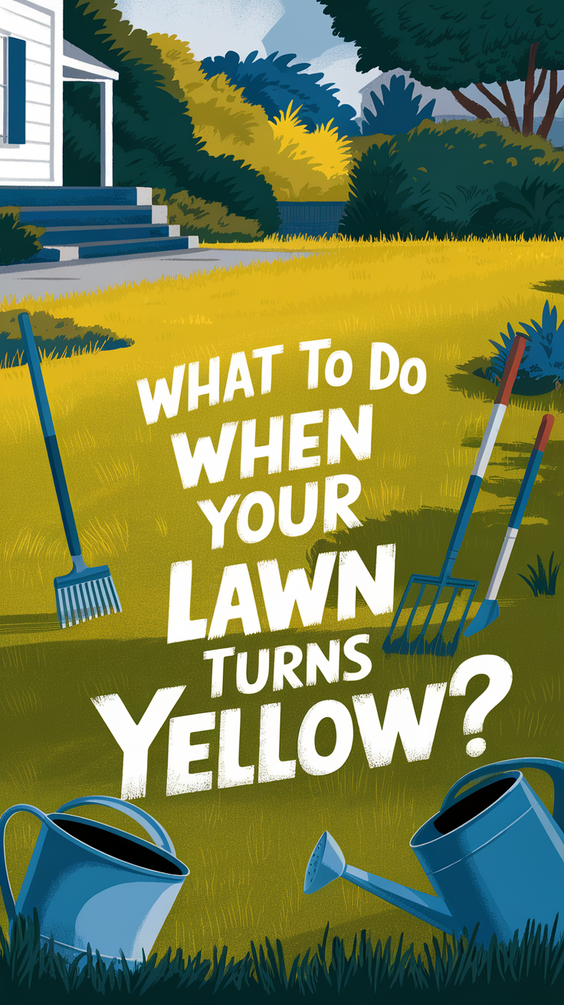What to Do When Your Lawn Turns Yellow: Smart Lawn Recovery Tips for 2025

Why Is Your Lawn Turning Yellow in 2025?
Has your lawn which was once full of green grass now become completely yellow? You’re not alone. The combination of changing climate patterns and severe summer heatwaves and innocent lawn care errors has caused American lawns to turn yellow throughout 2025.
Having a yellow lawn creates frustration for homeowners who want perfect yard appearance and those who need healthy turf maintenance. The good news? The root causes of this problem have specific origins and effective remedies exist.
This guide provides information about diagnosing yellow patches and offers solutions for fixing them while teaching prevention methods for future occurrences.
Who is this article for? Anyone with a lawn—from weekend gardeners to professional landscapers—looking for actionable advice and the latest eco-friendly techniques in lawn care.
Common Causes of Yellow Grass
Natural Factors to Consider
- Drought or intense heat: Especially common in southern and western states.
- Seasonal transitions: Some grass species go dormant and turn yellow during certain times of the year.
Improper Watering Practices
- Overwatering: Leads to root rot and fungus.
- Underwatering: Causes dry, brittle, and yellowed blades.
Soil and Nutrient Problems
- Nitrogen deficiency: One of the top culprits in yellowing.
- Soil compaction: Limits oxygen and water flow to roots.
- Imbalanced pH: Affects nutrient absorption.
Pests and Diseases
- Grubs and chinch bugs: Feed on grass roots.
- Fungal infections: Like dollar spot and rust disease.

Physical Damage
- Heavy foot traffic: Especially common in family yards and dog runs.
- Mowing too short: Stresses grass and exposes soil.
Did you know? Lawns need 1 to 1.5 inches of water per week, including rainfall.
Step-by-Step Guide: How to Diagnose Yellow Lawn Spots
Step 1: Visual Assessment
Look for patterns. Fungal diseases typically cause random patches but drought affects the lawn by creating large even areas.
Step 2: Check Soil Moisture
You should check soil moisture with either a screwdriver or a moisture meter. The soil remains dry below 3 inches which suggests underwatering as the cause.
Step 3: Inspect for Pests or Fungi
Check for white larvae along with powdery substances. Check the roots by lifting a small piece of turf.
Step 4: Evaluate Your Lawn Care Habits
Reflect on your mowing height to determine if it could be the cause. Watering at midday? The continuous use of a single fertilizer throughout multiple years?
“Yellow grass isn’t just a visual issue—it’s your lawn crying for help.” — Mike Lawson, Certified Turf Specialist
Best Practices to Revive a Yellow Lawn in 2025
Smart Watering Techniques
- Water deeply but infrequently (2-3 times a week).
- Water early in the morning to prevent evaporation.
Aerate the Lawn
- Use a spike or core aerator to loosen compacted soil.
- Improves oxygen and nutrient flow to the roots.
Apply the Right Fertilizer
- Use a slow-release nitrogen fertilizer with micronutrients.
- Avoid over-fertilizing, especially in summer.
Repairing Patches
- Overseed with climate-appropriate grass.
- Use compost topdressing to retain moisture.
Control Weeds, Pests, and Fungi
- Apply eco-friendly pest control products.
- Use fungicides only when absolutely needed.
Quick Tip: Avoid mowing more than 1/3 of the grass height at a time to prevent stress.
Most Common Lawn Care Mistakes to Avoid
- Watering during the heat of the day
- Using too much fertilizer
- Ignoring soil health
- Cutting grass too short (scalping)
- Neglecting aeration for years
Are you guilty of any of these? Don’t worry, fixing your habits is half the battle won!
Lawn Problems and Fixes: Quick Reference Table
| Problem | Visual Sign | Solution |
|---|---|---|
| Nitrogen Deficiency | Pale yellow blades | Add nitrogen-rich fertilizer |
| Overwatering | Mushy soil, fungal growth | Reduce watering frequency |
| Underwatering | Brittle yellow patches | Water deeply 2-3 times weekly |
| Soil Compaction | Sparse growth, dry patches | Aerate lawn twice a year |
| Chinch Bugs or Grubs | Brownish-yellow patches | Apply natural pest control |
| Fungal Disease | White/pink spots, rust color | Apply appropriate fungicide |
Lawn Care Trends in 2025: What’s Changing?
Rise of Smart Lawn Systems
- Automated sprinklers with soil sensors.
- App-connected lawn care tools.
Eco-Conscious Fertilizers
- Organic, phosphorus-free, and pet-safe options are booming.
- Focus on slow-release and carbon-neutral products.
Native Grasses and Low-Mow Solutions
- Climate-adapted grasses reduce maintenance.
- No-mow zones becoming trendy in suburban areas.
Curious what grass types work best in your zone? Check with your local extension office.
Frequently Asked Questions
Can a yellow lawn turn green again? Yes, if the roots are still healthy and the problem is addressed quickly.
How long does it take to fix a yellow lawn? Anywhere from 2 to 6 weeks depending on the issue and care steps taken.
Is mowing bad when grass is yellow? You can mow gently, but never cut more than 1/3 of the blade.
Should I reseed a yellow lawn? Only if the yellow areas are dead. Test by tugging on the grass.
Final Takeaways: Restore Your Lawn’s Health in 2025
- Yellow grass isn’t the end. It’s a signal that something needs adjustment.
- Start with diagnosis before taking action.
- Focus on balanced watering, proper mowing, and seasonal fertilization.
- Use smart tools and eco-conscious products to keep your lawn healthy and resilient.
What about you? Has your lawn turned yellow in recent times? Please share the experiences and tips you have regarding this matter in the comment section.

